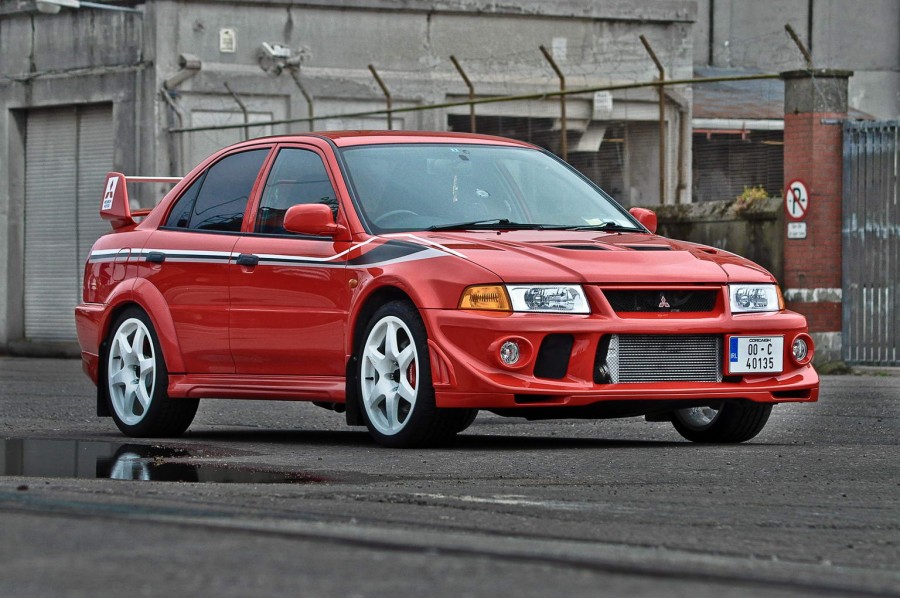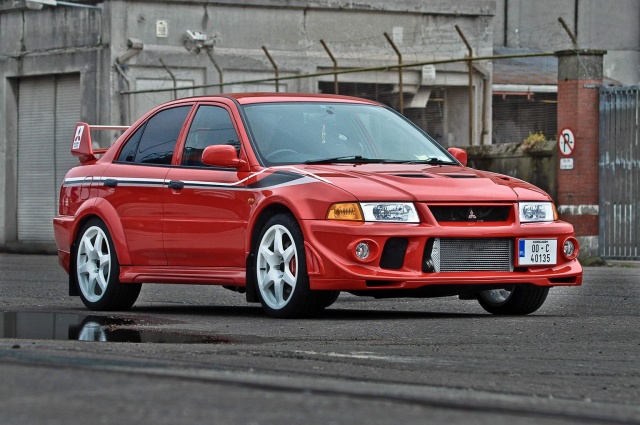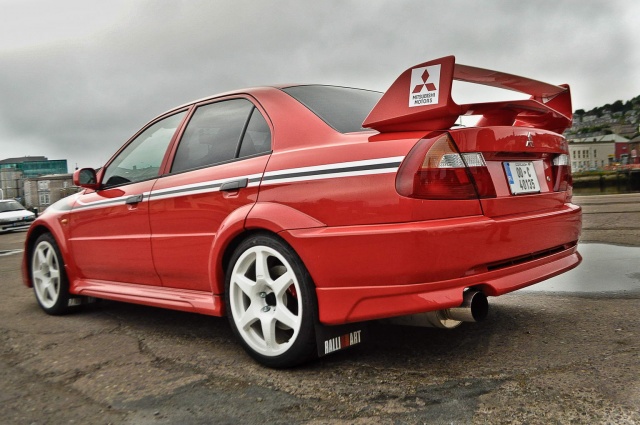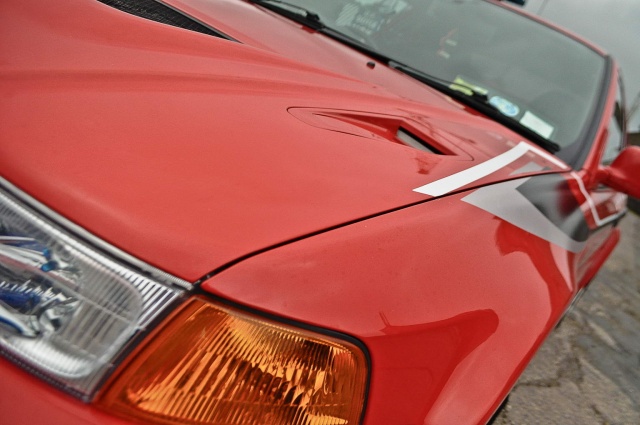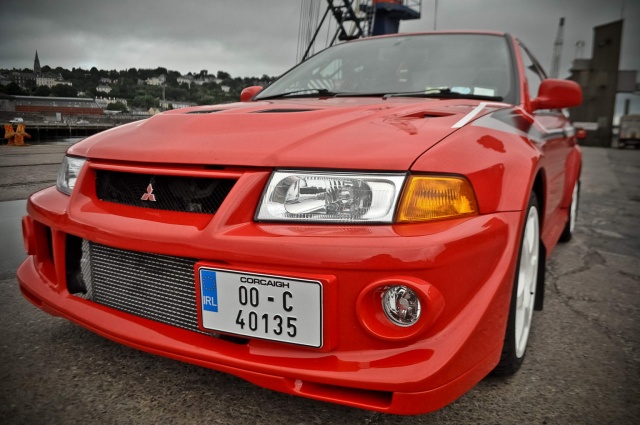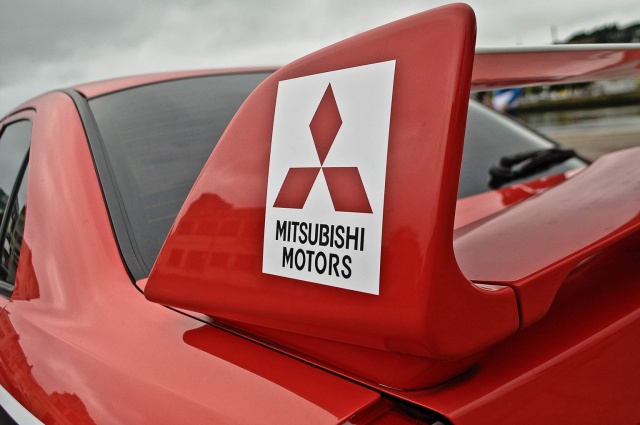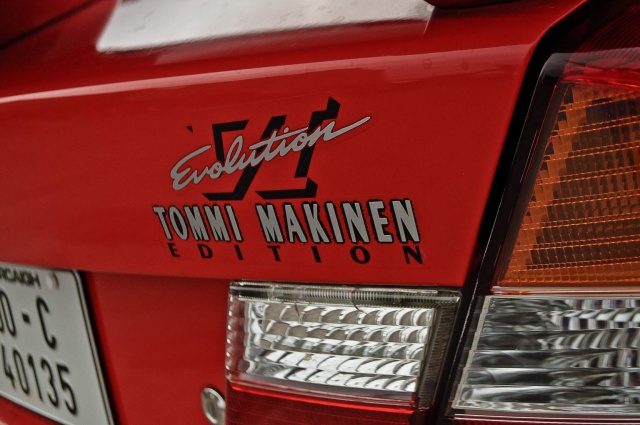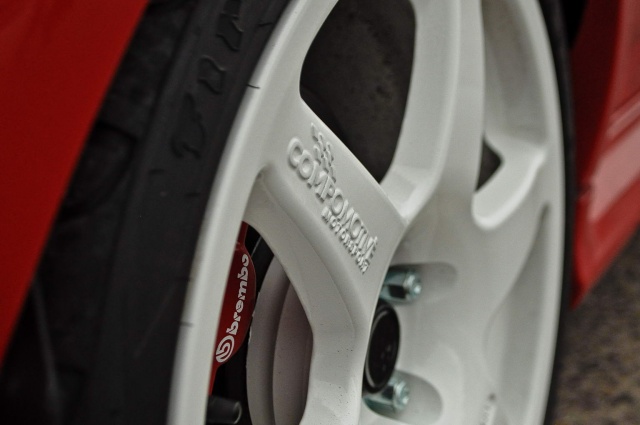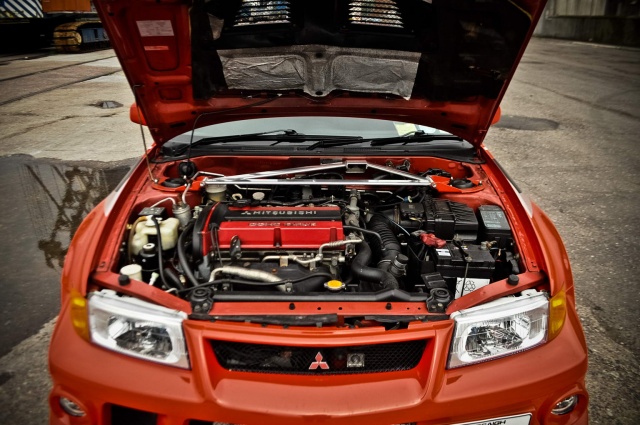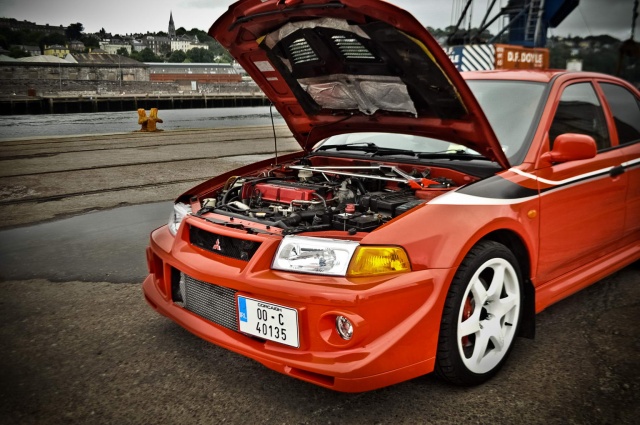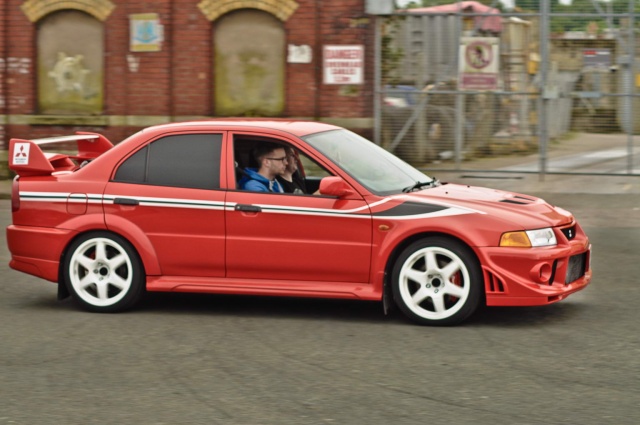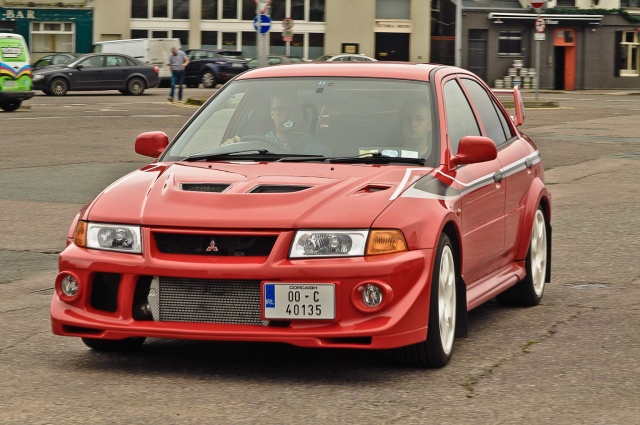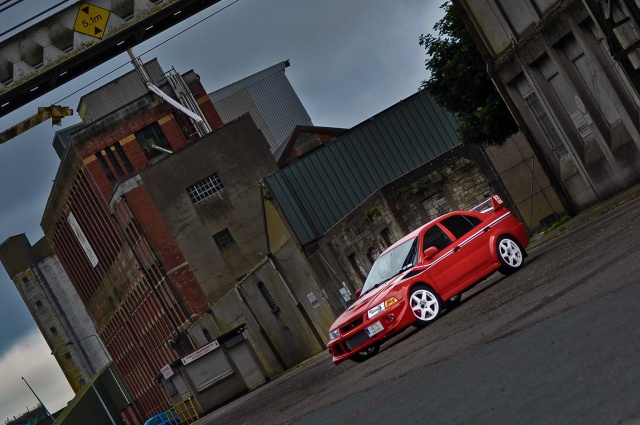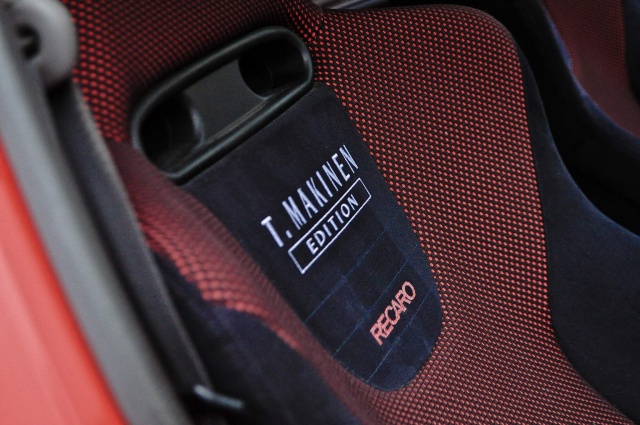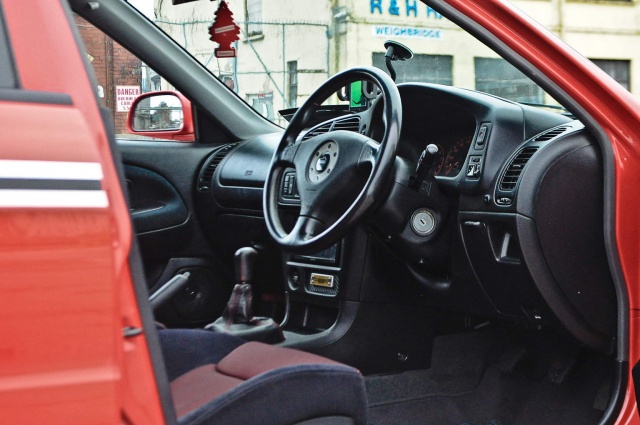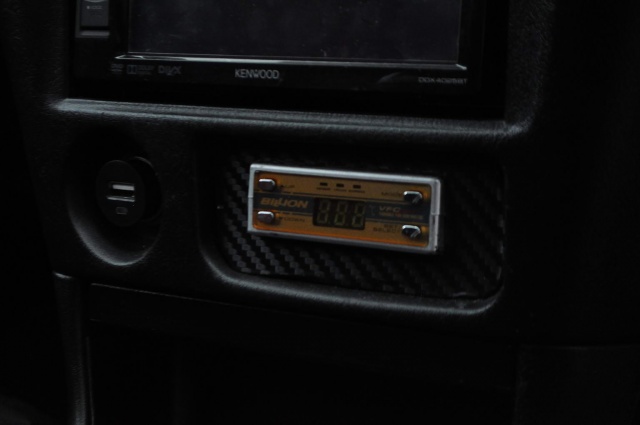The clock reads 60 seconds. A red saloon pulls up to a rutted stage start line, racing brake pads squealing in protest after being vigorously heated for the last five minutes of the road section to the stage. The car idles roughly, the noise from the radiator fans almost eclipsing the gruff exhaust note. Two Finnish flags adorn each rear side window, the names Makinen and Mannisenmaki barely visible under a sheen of mud. Thirty seconds. The co-driver reads the first page of pace notes, enabling the pilot to paint an image of the road ahead. The assembled crowd is quiet, but the silence is about to be shattered.
Fifteen seconds. The driver flicks the "STAGE" button, and the myriad of computers controlling the engine, differentials and suspension send the appropriate signals to the soon-to-be-tortured mechanical components. Ten seconds to go, and an aural assault begins consisting of a vicious turbo whistle, overlaid with pops and bangs from the exhaust, as the turbocharger’s anti-lag system dumps raw racing fuel into the exhaust manifold to keep the turbine constantly spinning. Flames belch from below the rear bumper, the car visibly strains like a greyhound in a trap, the start marshal shouts: "VIISI, NELJÄ, KOLME, KAKSI, YKSI, MENE!". With that, the Mitsubishi Lancer rockets into the Finnish forest, the sound reverberating off the trees. The anti-lag system is almost redundant, as no sign of any throttle lift can be heard. Tommi Makinen wasn’t known for backing off.
Unlikely heroes
How did a three-box Mitsubishi saloon and an extremely quiet man from Puuppola, Finland become cult icons? It’s quite simple. Group A regulations required manufacturers to build a certain amount of road cars with the same basic specifications as the chosen competition car, in order to qualify for homologation. Mitsubishi wanted to take the Lancer rallying, and that meant using a 2.0-litre turbocharged engine, with a four-wheel drive transmission. The name "Evolution" was coined, and to date there has been ten iterations based on different models of the base Lancer. Helpfully, Mitsubishi chose to create several variants of each Evo to add to the confusion. From RS to GT-A, and everything in between, there are many legendary models. Some are more legendary than others however...
Step forward the Evo VI Tommi Makinen Edition, sometimes referred to as the Evo 6.5. Built to celebrate Tommi’s run of four consecutive WRC driver’s championships from 1996 to 1999, it is regarded by most as THE one to have. At the time, Sebastien Loeb wasn’t a player on the world scene, so no-one dreamt that Makinen’s winning streak would ever be eclipsed. In fact, the late, great Colin McRae once said that Tommi was the only driver that he would not feel confident of beating in a straight fight - that’s how quick he was.
The Tommi Makinen Edition gained a new front bumper that aped those fitted to the works rally cars, some gorgeous white Enkei wheels and the Recaro and Momo treatment inside. Under the skin, a quicker-ratio steering rack, titanium turbo, revised suspension settings and a front strut brace differentiated it from the "regular" Evos. You could have yours in blue, black, silver, white, or as is the case here, bright red with the rally-style decals. Guess which colour is the most sought after today...
Inevitably, comparisons were drawn with whatever variant of the Subaru Impreza was launched that particular week, and road testers who knew their Type-RAs from their P1s tended to give the Evo the nod in terms of focus and rawness. Tommi would nod sagely at that...
A red unicorn
The 6.5 rolls up to our photography location and from a few hundred metres away I can see that this is no ordinary Lancer. The colour is first to catch the eye, and even on this overcast afternoon it’s burning bright through the gloom. Then, the bodywork addenda. My word it’s wide. All arches, grilles and slats, it’s like a standard Lancer that ingested some particularly potent steroids. Reviews of the time slated it for looking like it had ram-raided a branch of Halfords, but I think it’s fantastic. Each component has a function; the vents and grilles feed air to the engine bay, the arches cover wider track suspension, the surfboard rear wing keeps the tail planted at speed (and provides helicopters with an emergency landing pad, we presume). The graphics finish it off, and all it needs is a set of numbers on the doors to convince onlookers that you really are on your way to the next stage. I particularly like the "TOMMI" decal emblazoned across the rear wing, a clever way to get around the ban on cigarette advertising at the time...
Photographer Cian and I spend a good ten minutes just drinking in the details. This particular car has covered a smidge over 80,000km and is in absolutely immaculate condition, a huge credit to owner Joe, who is only the second name on the logbook. The only discernible modifications are a set of 18-inch Compomotive MO wheels, as found on every period rally car from Celica to Cosworth, and a HKS cat-back exhaust system to give a tiny bit of extra volume when pushing on. Joe informs me that it’s one of only 212 left in the world in this colour, so when he tosses me the keys my trepidation is pretty high...
Settling into the embroidered Recaro goes some way towards easing the nerves. It’s glorious, gripping in all the right places, and the driving position is absolutely spot on. The leather Momo wheel might be slightly plus-sized in comparison with modern cars, but it feels just fine. Start-up is drama free, the Evo settling to a busy but unobtrusive idle, and you start to wonder if the interior might be out of kilter with the mad external looks. It’s pure late-nineties Japanese spec, with hard, shiny plastic everywhere you look. Setting off is as easy as in the common-or-garden 1.3-litre model thanks to the standard clutch, and I (guiltily) start to wonder what all the fuss is about.
It only takes a few seconds to change my mind. Around 4.6 seconds in fact, because we are now doing 100km/h. This is FAST. The titanium turbo suffers from minimal lag, so you just go and go and go, aided by a supremely sweet gearchange. The gentleman’s agreement of the time among Japanese manufacturers officially limited the 4G63 engine to around 280hp, but it feels much stronger than that, to the point where I imagine some Japanese engineer cackling hysterically as he alters the dynograph settings to give a hugely underquoted number...
Damping, as is to be expected from a road-going rally car, is phenomenal. A slightly jiggly ride at low speed is more than made up for by the high-speed composure, and coupled with the strong brakes and transmission wizardry you start to imagine that not much short of an Exocet missile could cover twisty ground at the sort of rate this car is capable of. The AYC (Active Yaw Control) takes a little getting used to, but doesn’t feel artificial in the way that certain other intelligent transmission systems go about their work. Together with the beautiful steering (modern manufacturers please take note...), which is weighted just right and takes you exactly where you want to go on the road by some form of telepathy, it’s easy to see why these beasts are such icons.
I’m a little bit in love, but also miffed that no-one really makes this kind of stuff anymore. Group A is long dead, along with the need for manufacturers to lightly sanitise their competition cars for road use. One drive in a Tommi Makinen Edition Evo and you’ll understand what all the fuss is about. It’s a fitting tribute to a legendary driver, and the highest watermark in the Lancer Evolution story.
Many thanks to Cian Donnellan for the photos.
Read the first in the series of Irish icons: Ford Escort MkII

